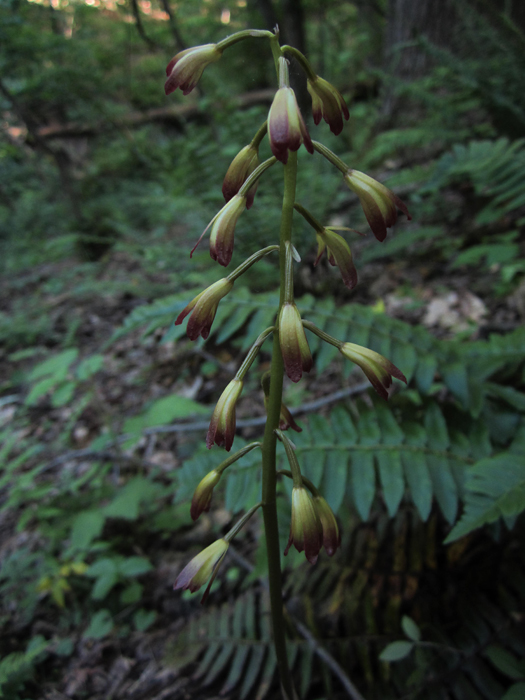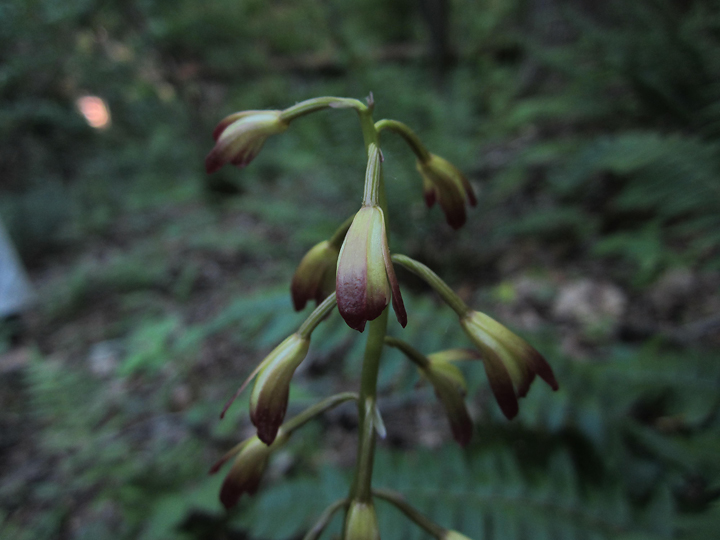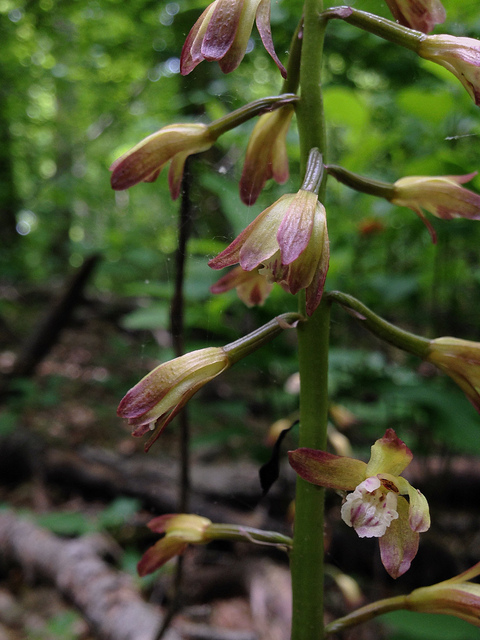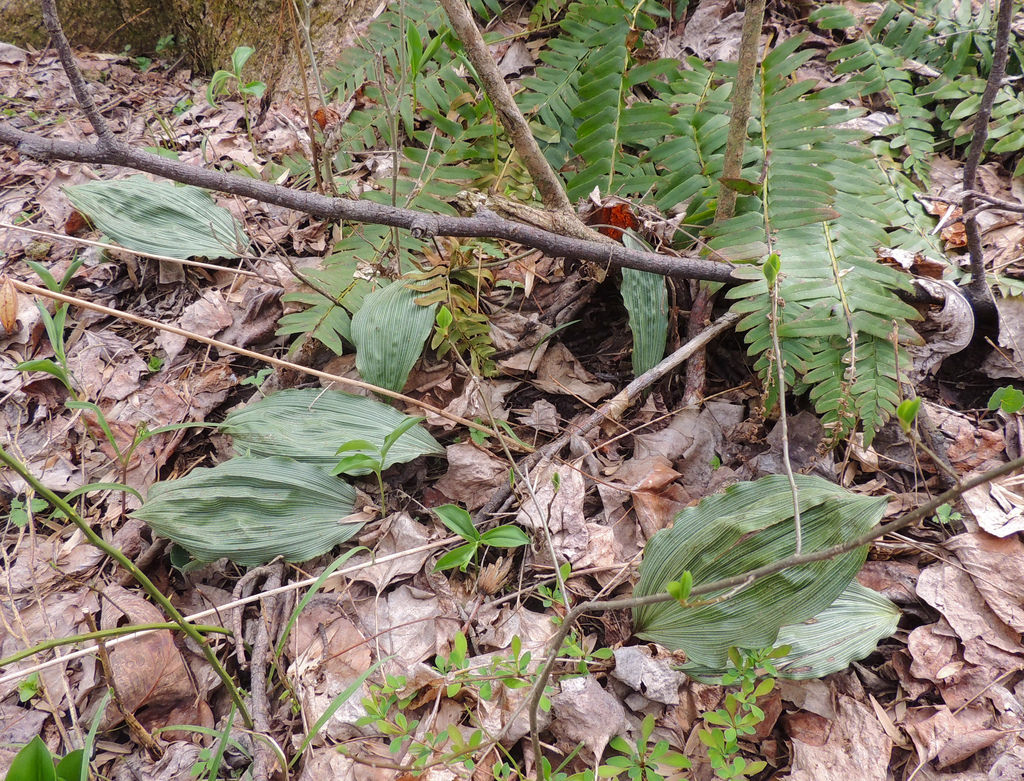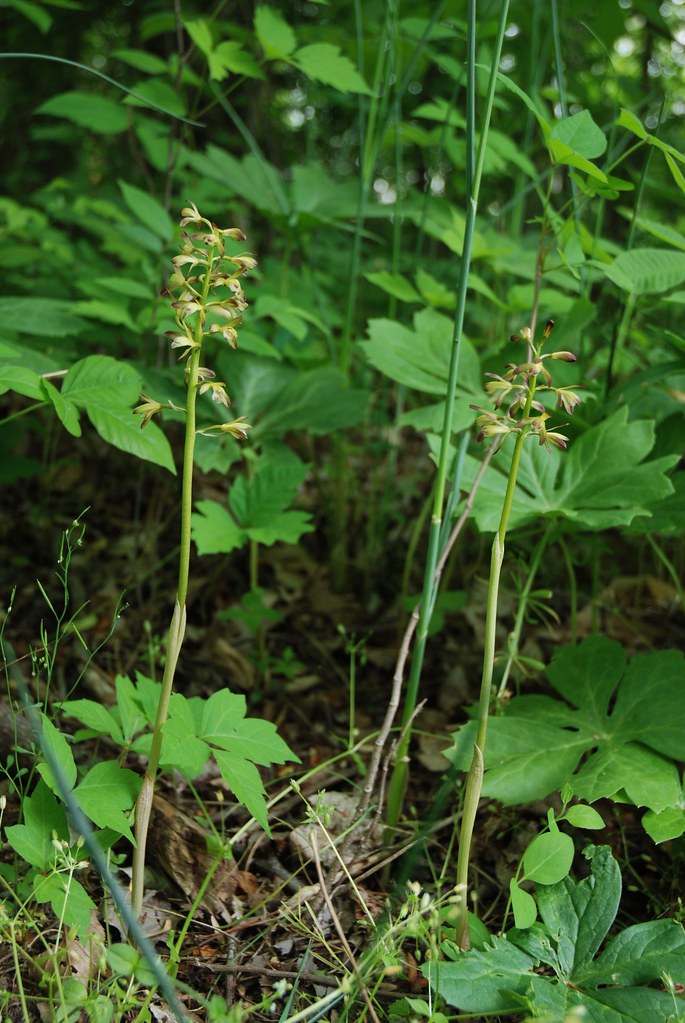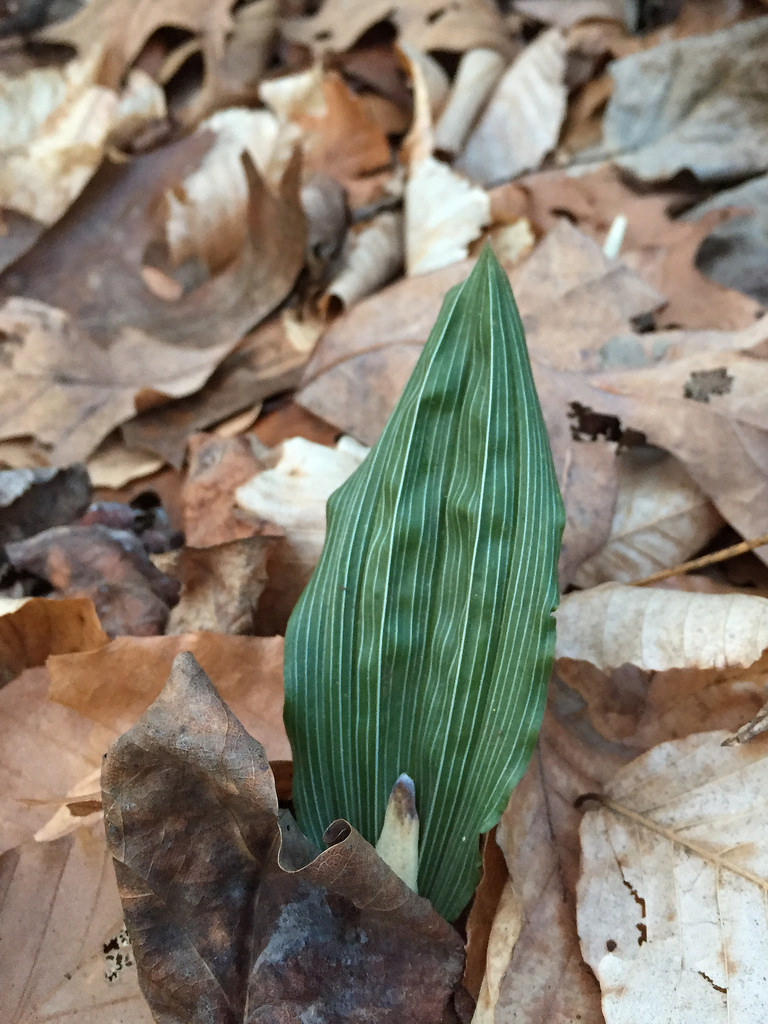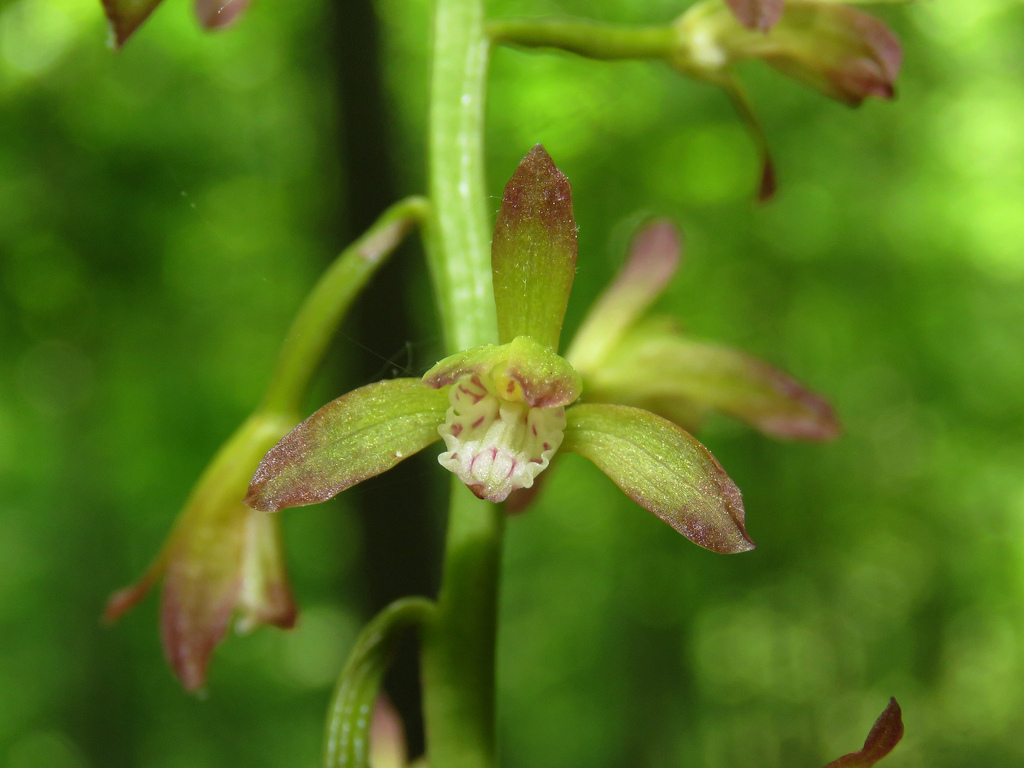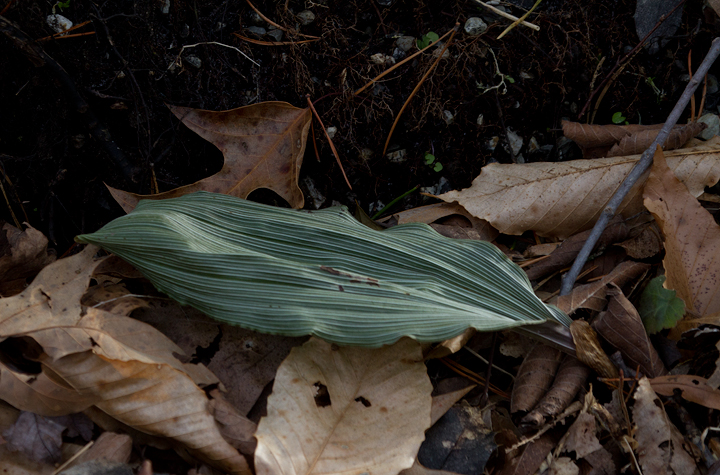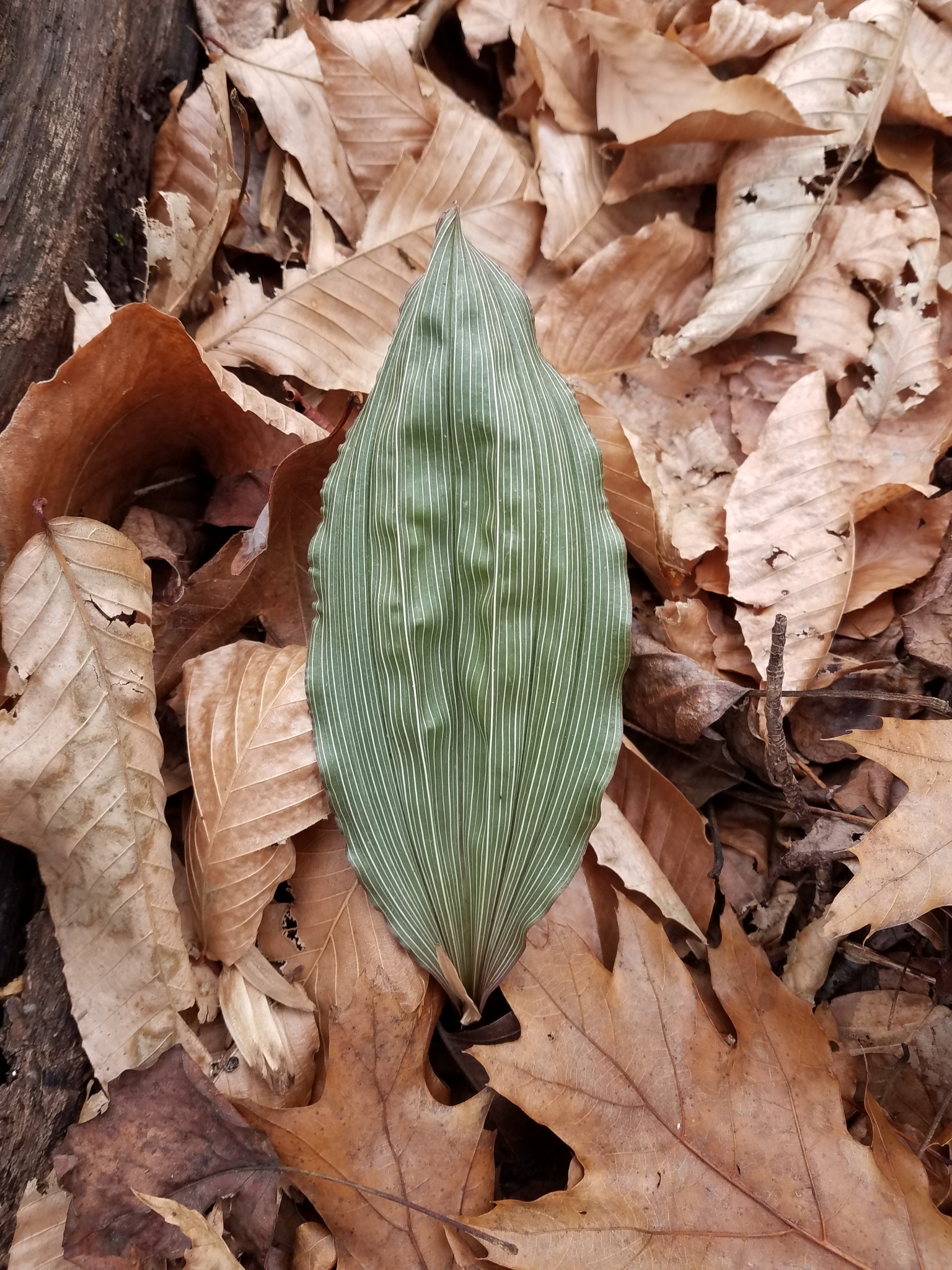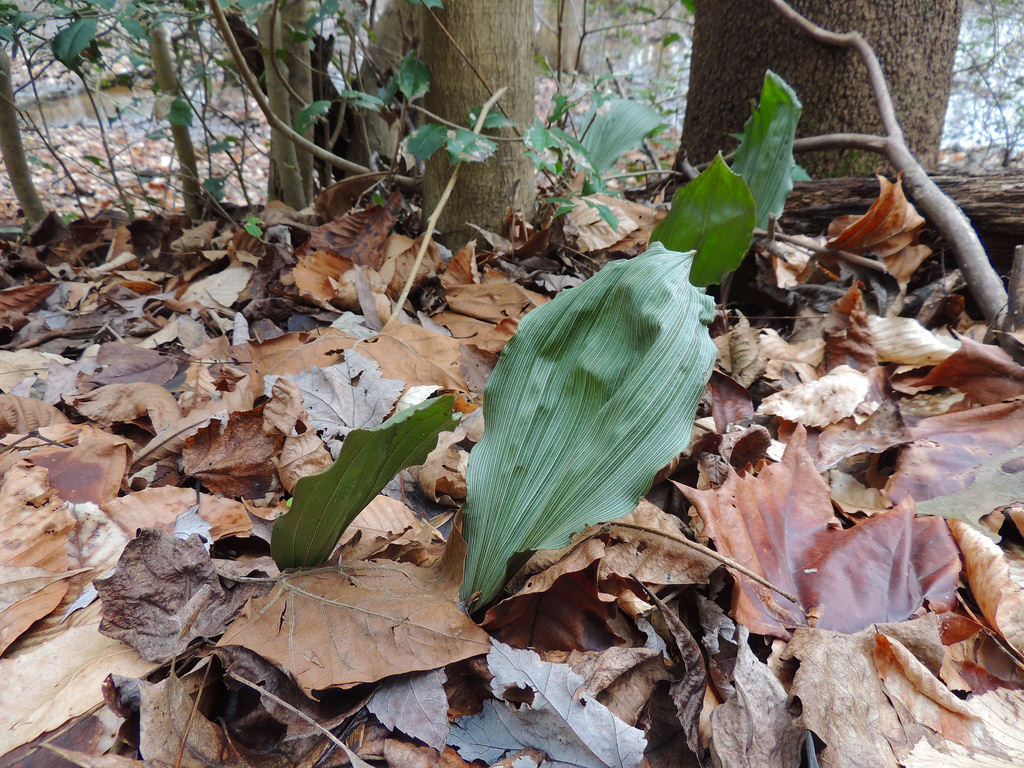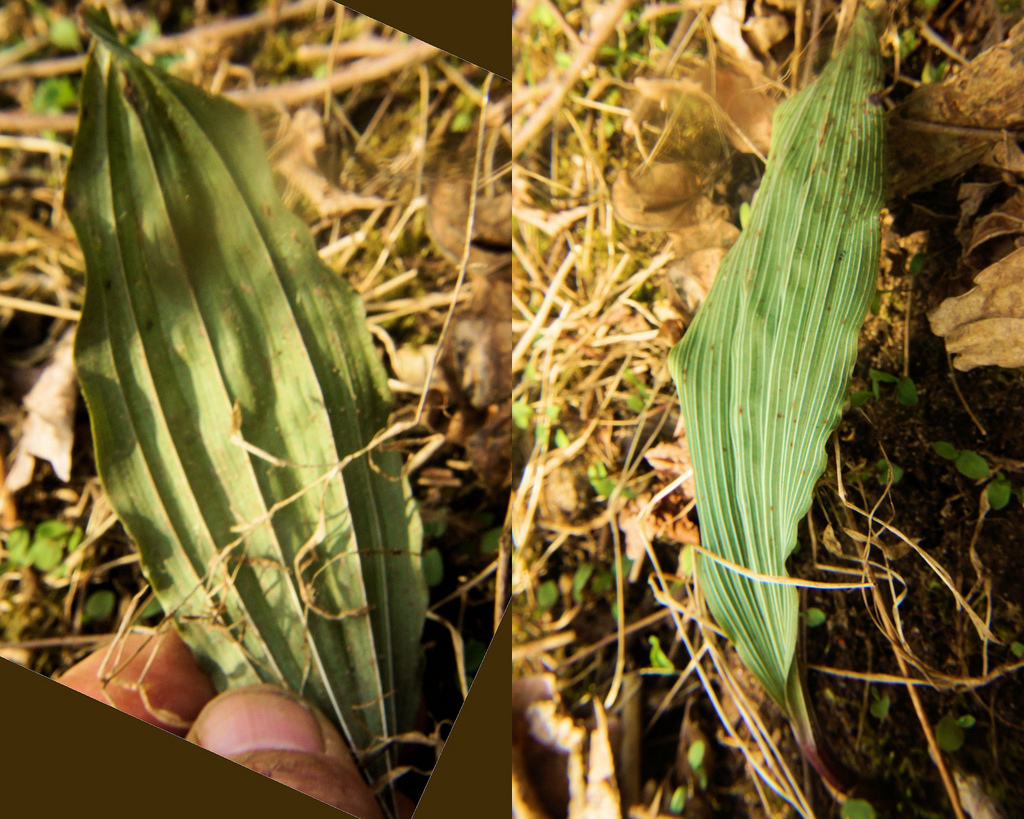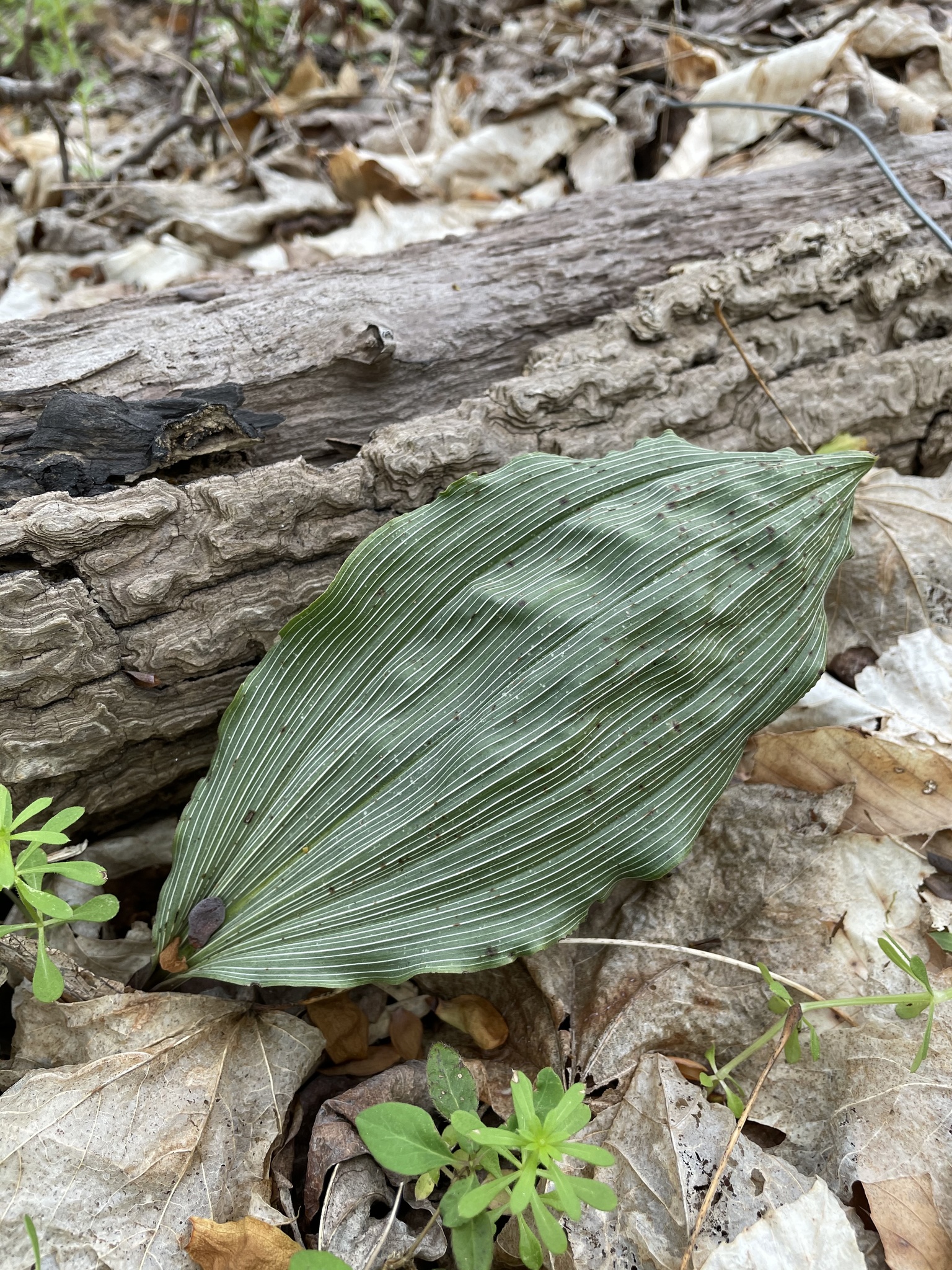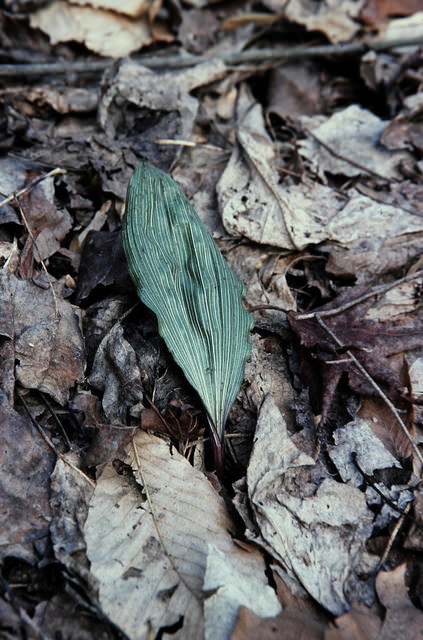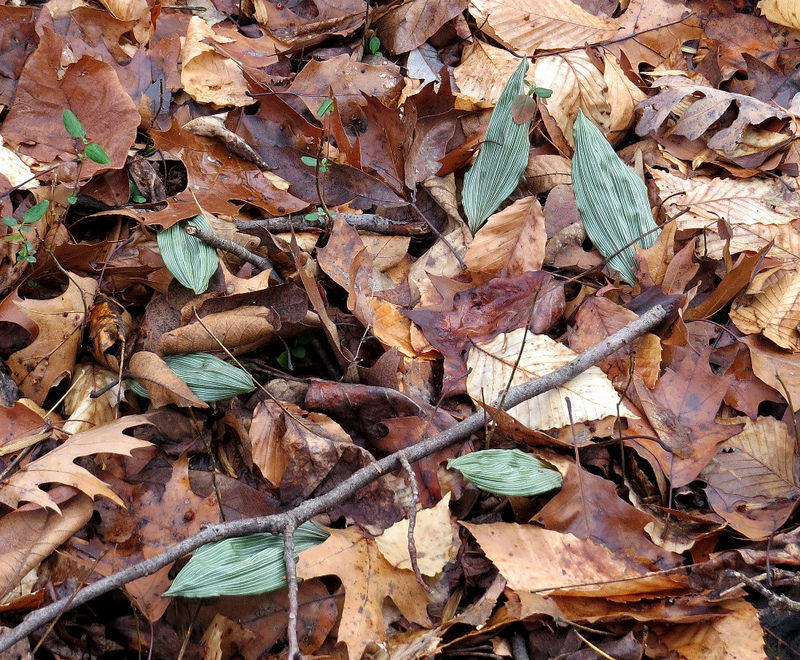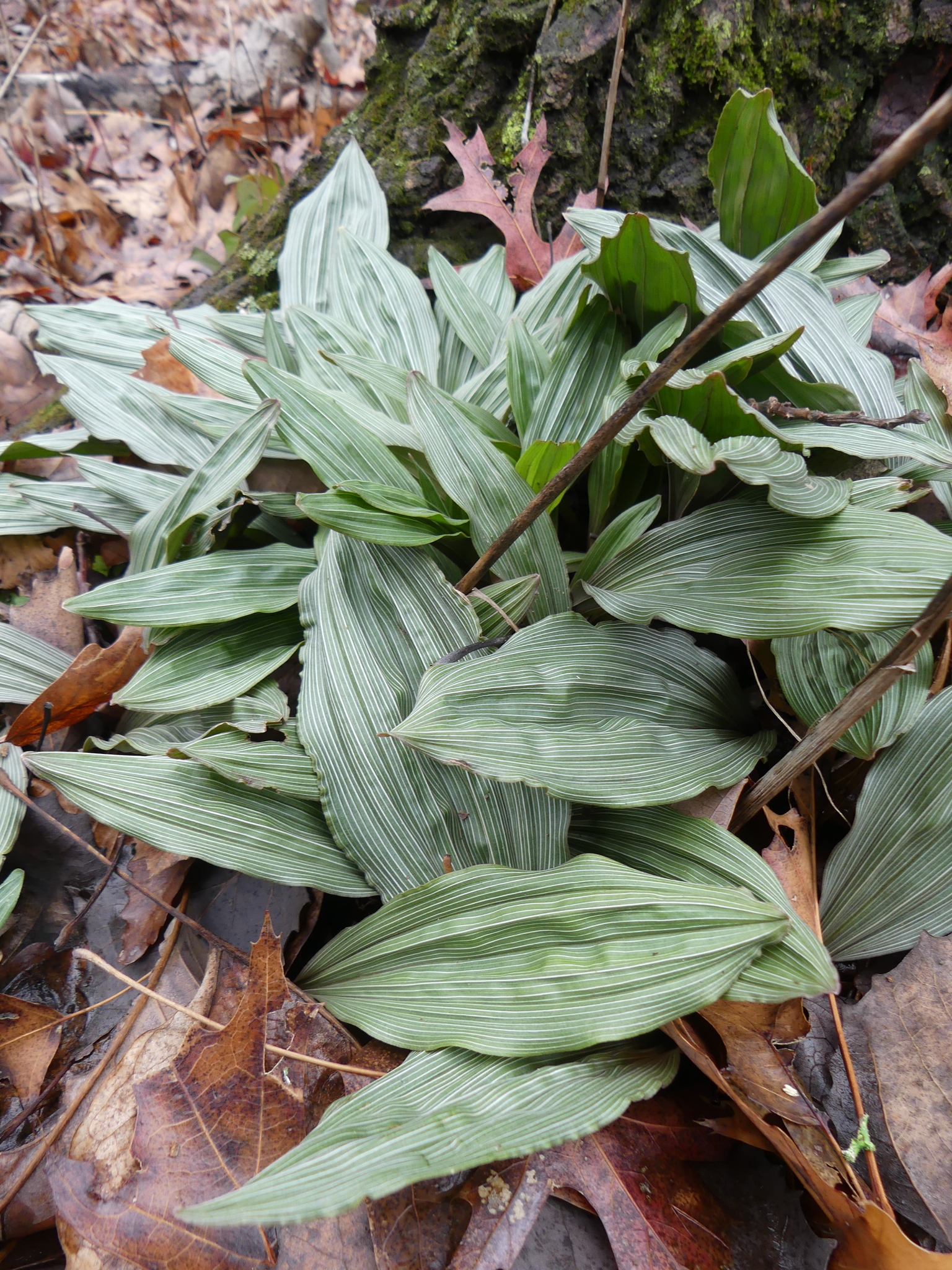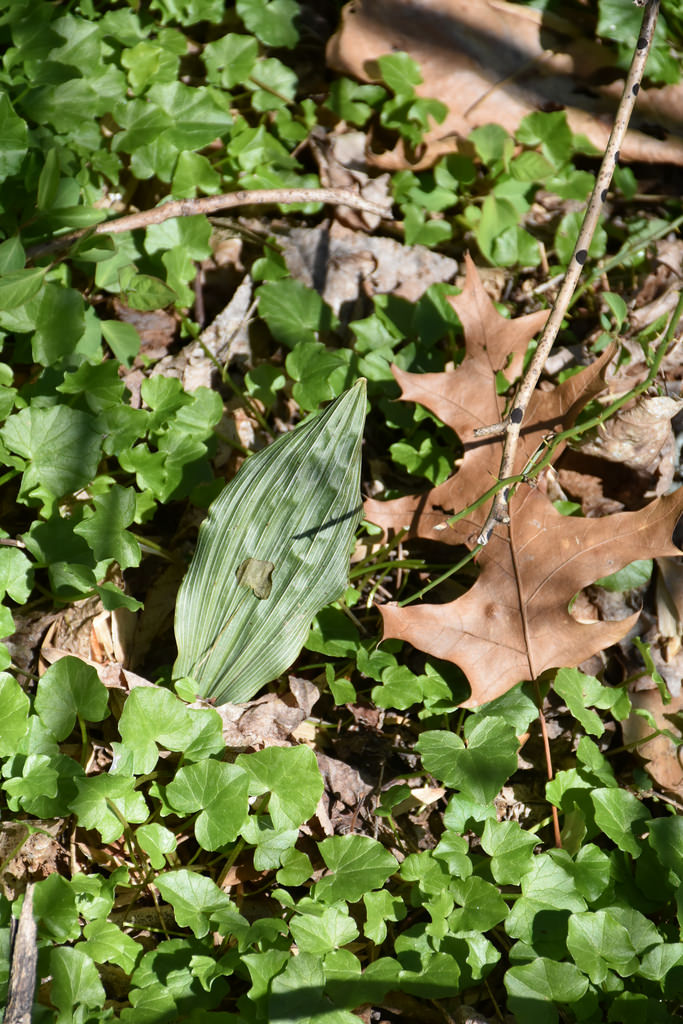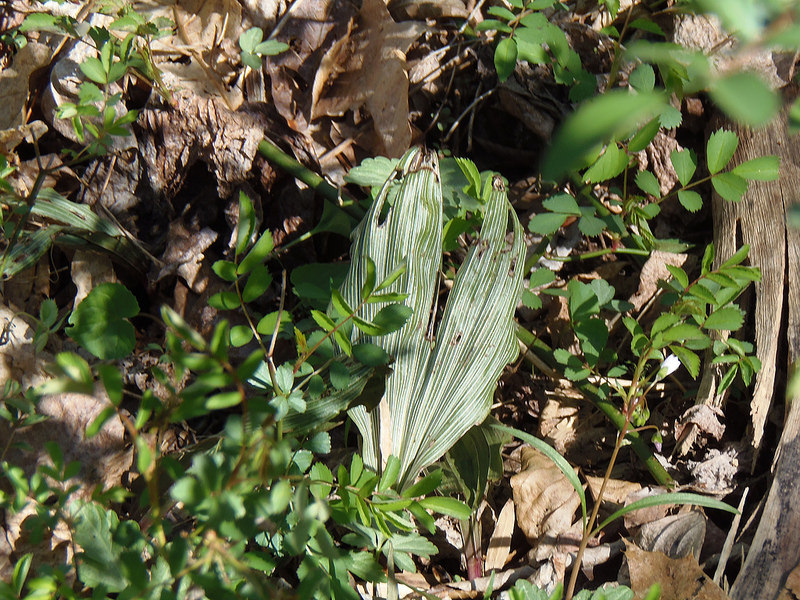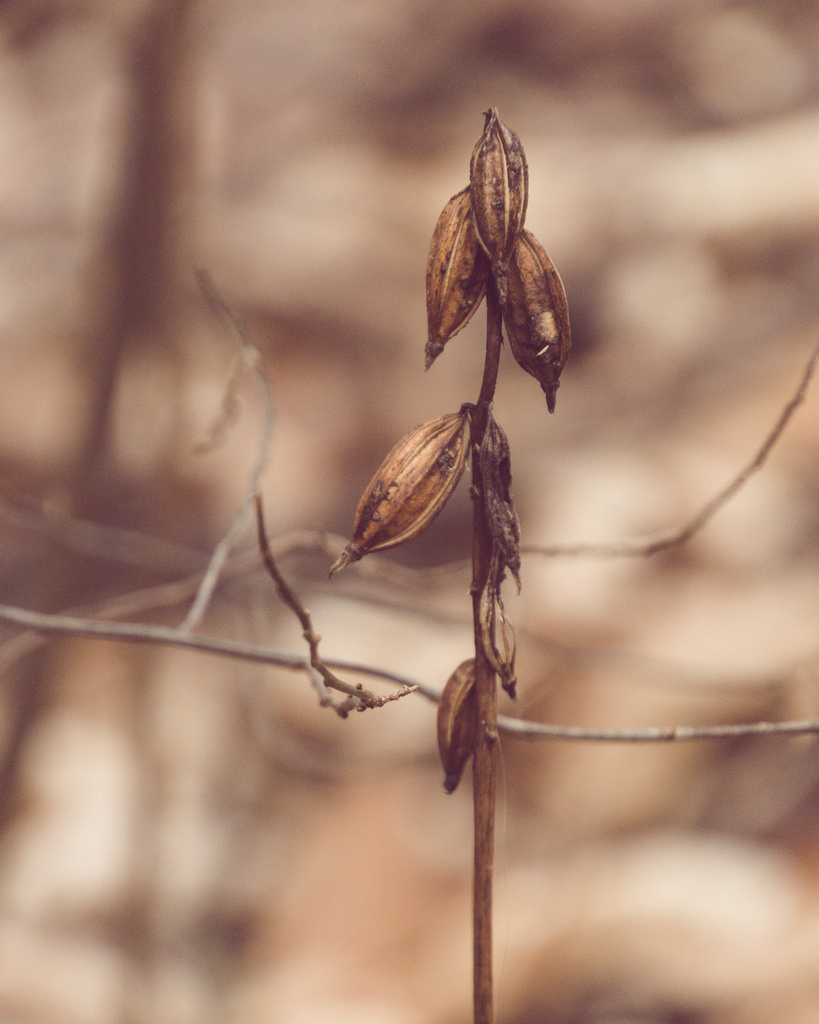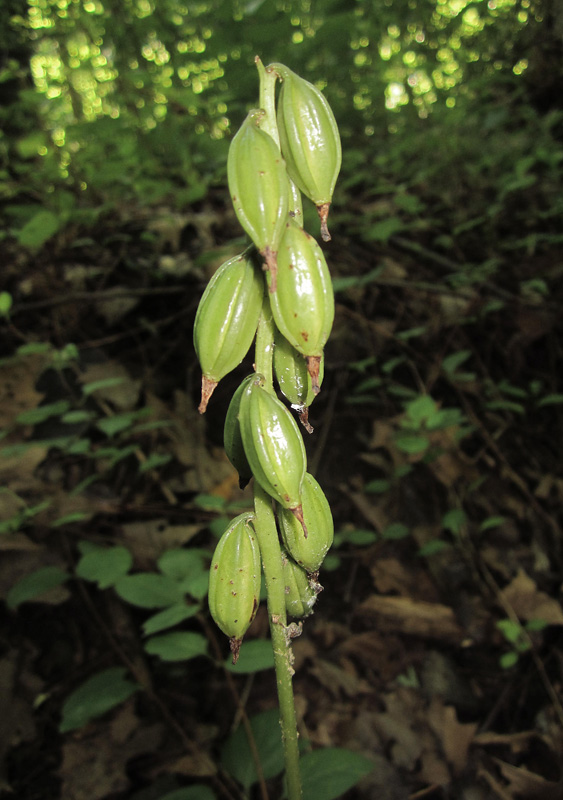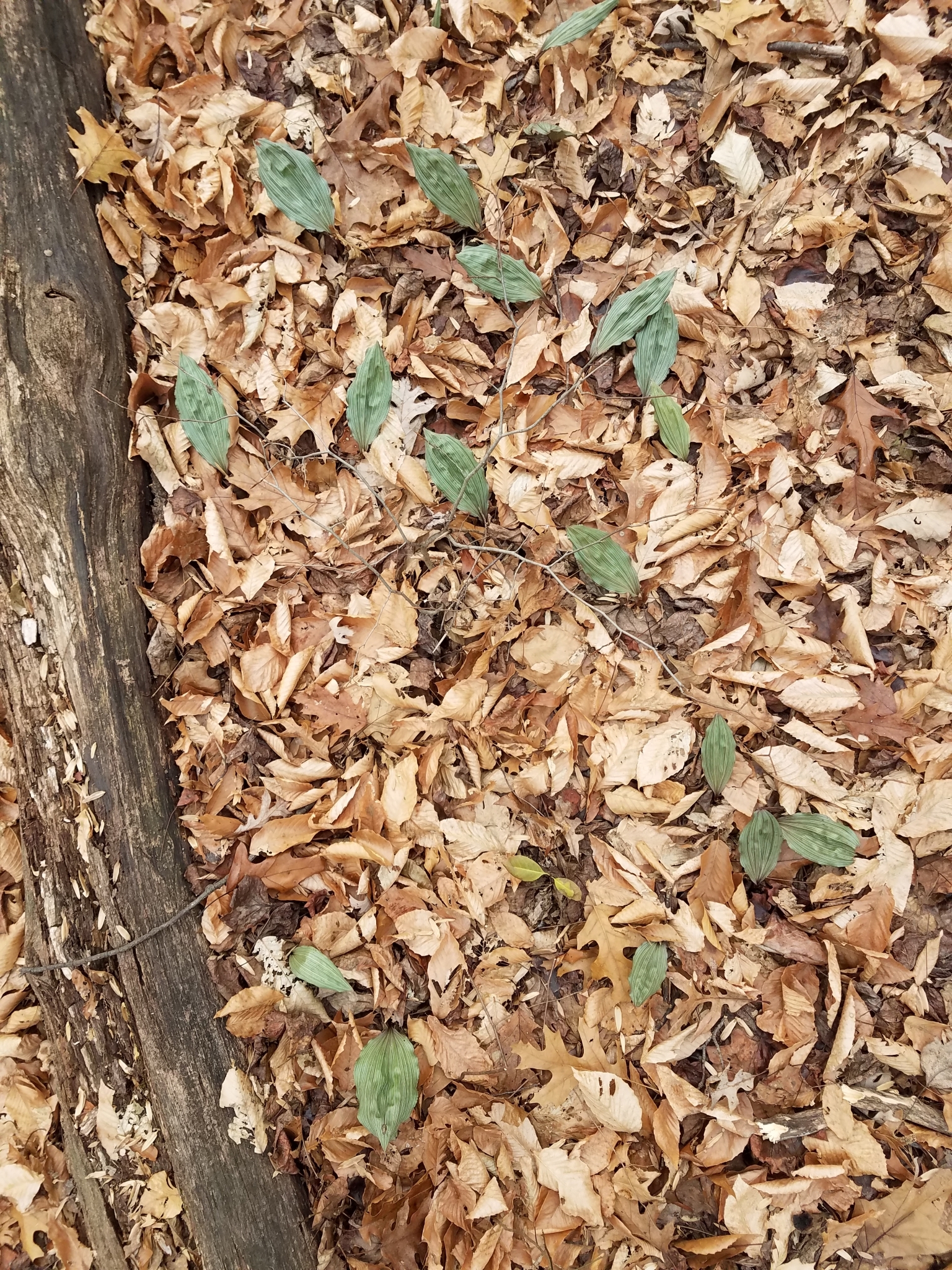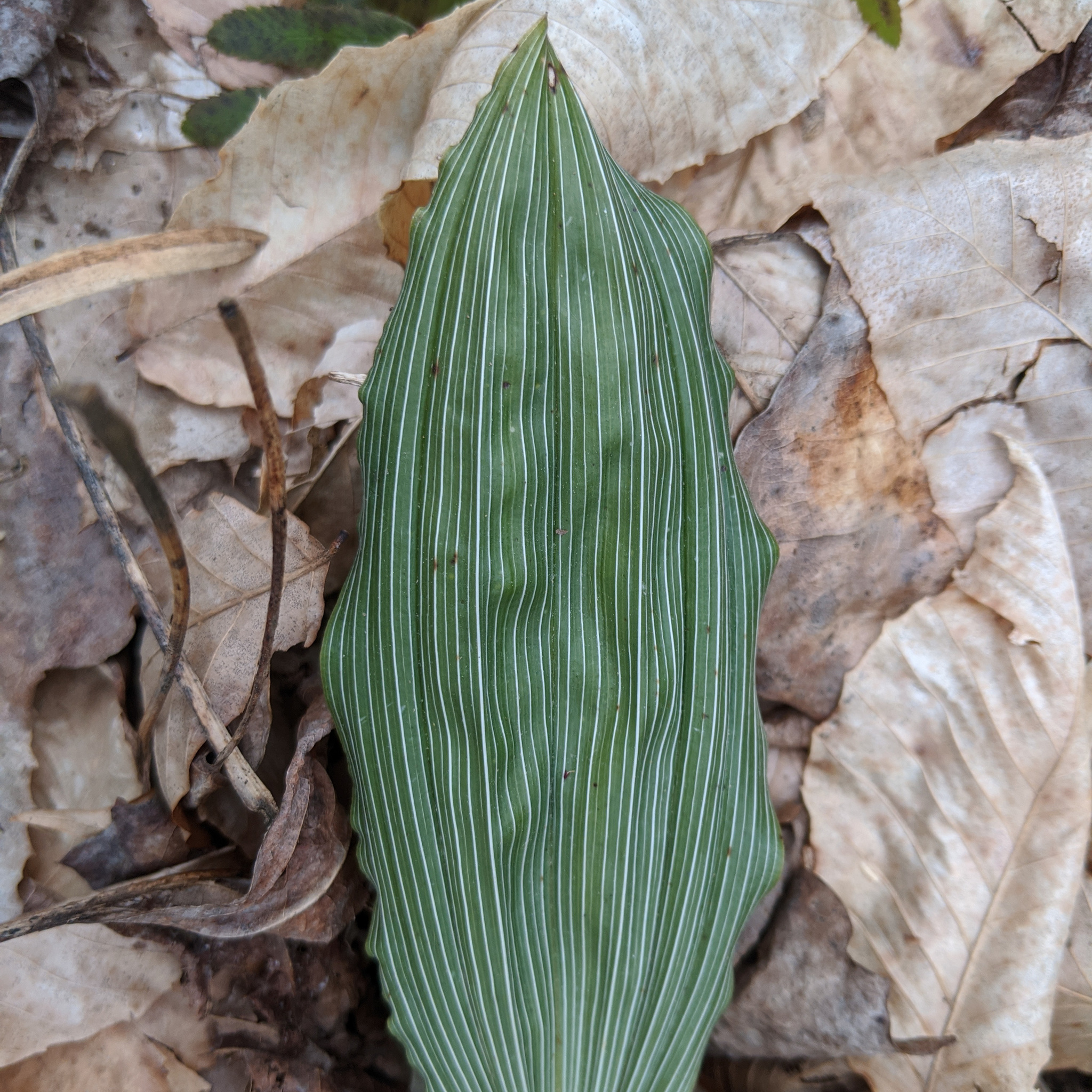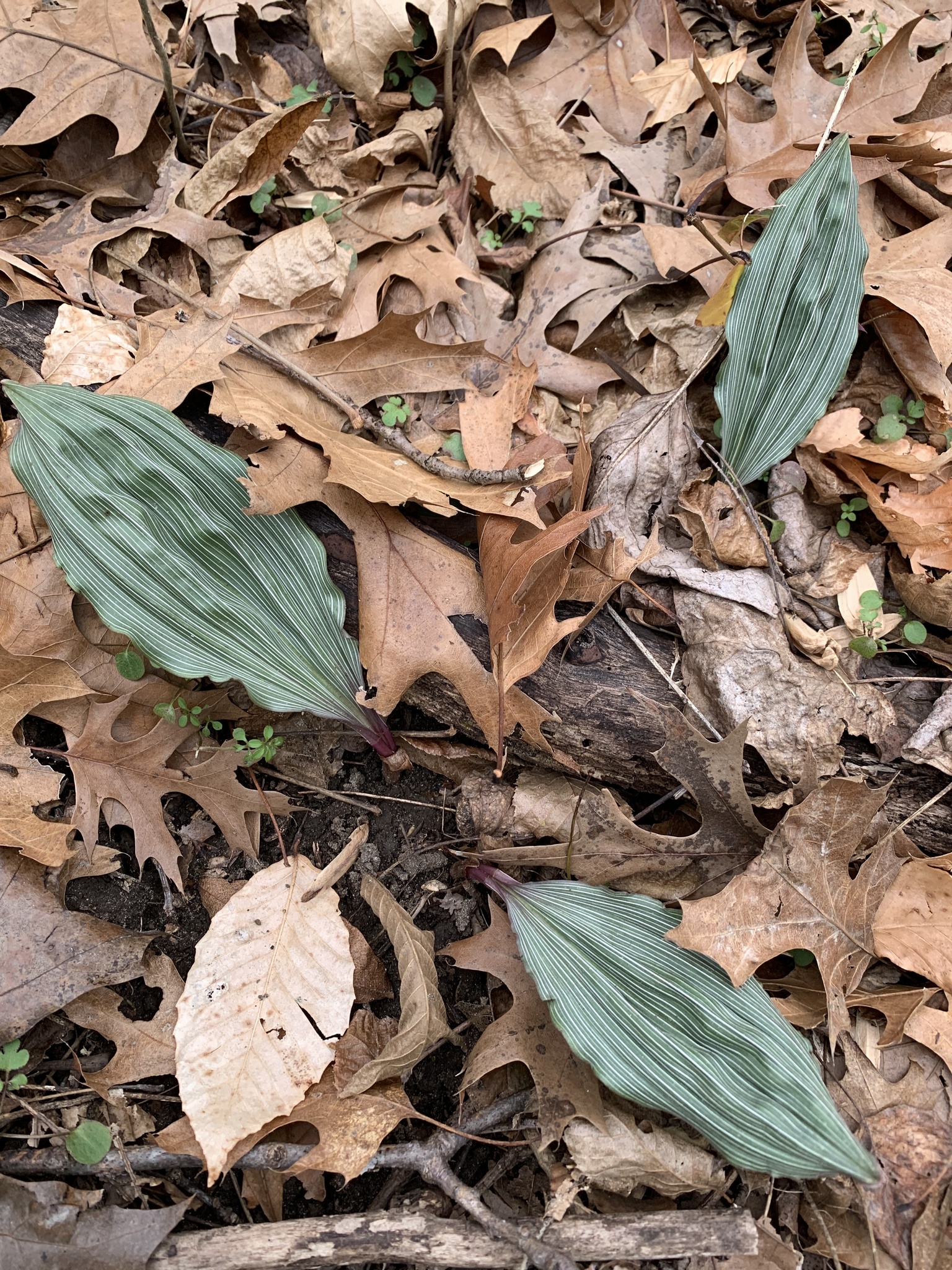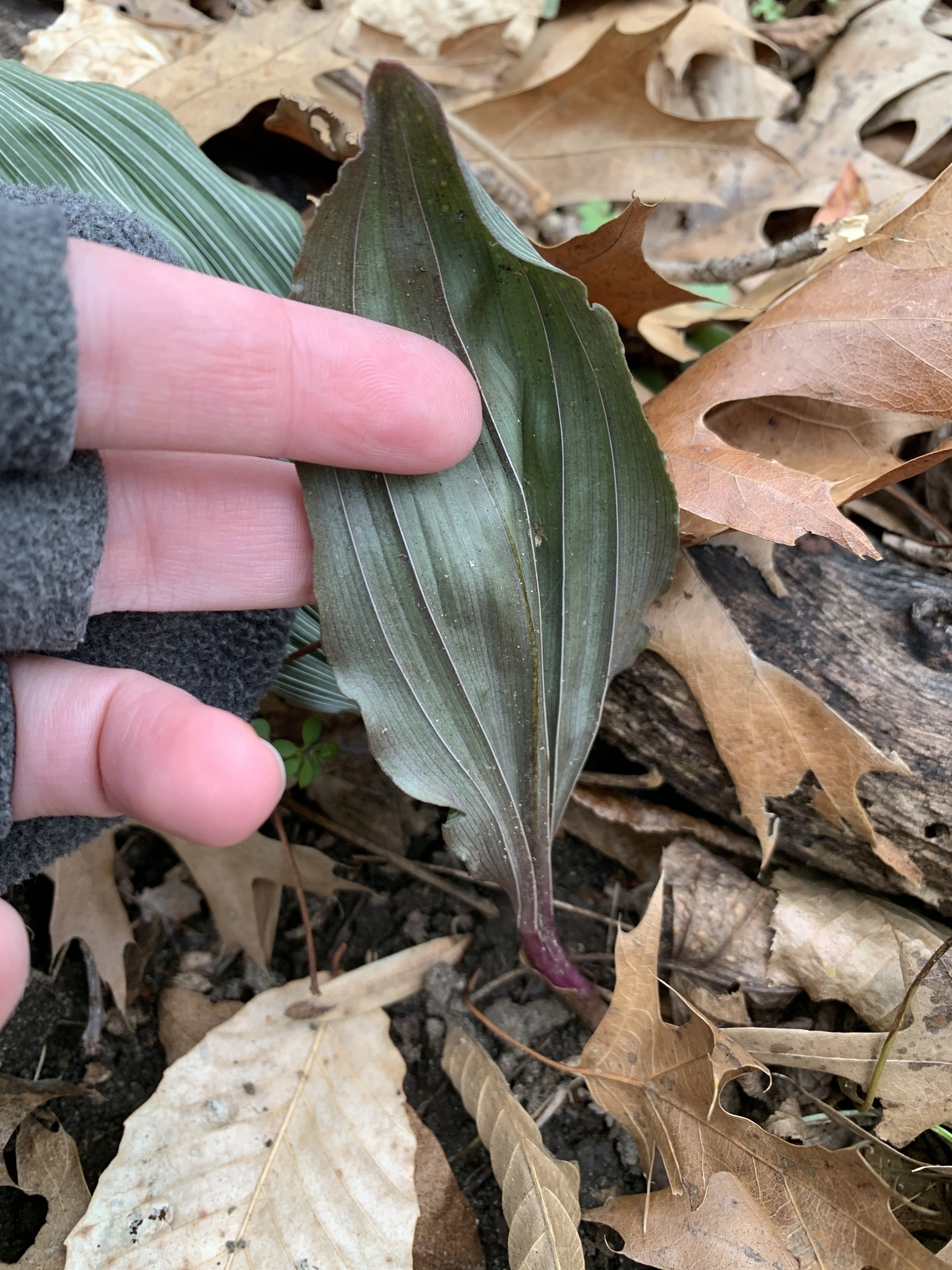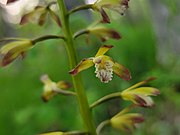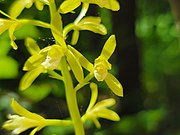Map Snapshot














314 Records
Status
Native to eastern North America and typically occurs in moist, rich deciduous woods (J. Hill/MNPS).
Description
Puttyroot's pale, ghostly flower stalk is difficult to find. More evident is the single, distinctive basal leaf, which is produced in late summer or fall. The leaf is large, oval, bluish-green above and purplish-green beneath. It is corrugated, with many, prominent white veins. It persists through the winter, withering at about the time the scape of flowers is produced in the spring (J. Hill/MNPS).
Seasonality Snapshot
Source: Wikipedia
| Aplectrum | |
|---|---|

| |
| Aplectrum hyemale | |
| Scientific classification | |
| Kingdom: | Plantae |
| Clade: | Tracheophytes |
| Clade: | Angiosperms |
| Clade: | Monocots |
| Order: | Asparagales |
| Family: | Orchidaceae |
| Subfamily: | Epidendroideae |
| Tribe: | Epidendreae |
| Subtribe: | Calypsoinae |
| Genus: | Aplectrum (Nutt.) Torr. |
| Species: | A. hyemale
|
| Binomial name | |
| Aplectrum hyemale | |

| |
| State-level distribution of Aplectrum hyemale in the United States | |
| Synonyms[1] | |
|
List
| |
Aplectrum hyemale is a species of orchid native to the eastern United States and Canada, from Oklahoma east to the Carolinas and north to Minnesota, Ontario, Quebec and Massachusetts.[1] It is particularly common in the Appalachian Mountains, the Great Lakes Region, and the Ohio and Upper Mississippi Valleys. Isolated populations are also reported from Arizona.[2]
Aplectrum hyemale is the sole species of the genus Aplectrum. The generic name comes from Greek and signifies "spurless". The species is commonly referred to as Adam and Eve or putty root; the latter refers to the mucilaginous fluid which can be removed from the tubers when they are crushed.[citation needed]
Aplectrum hyemale spreads underground through the growth of its tubers, forming large colonies. The leaves appear in late November and persist until March. They are uniquely pin-striped, with parallel alternating silvery-white and green stripes. In late May or early June the flower stalk emerges carrying several flowers, each only a few millimeters across.[3] It is sometimes confused with Tipularia discolor, another orchid species that occurs in eastern North America.[4][5]
There exists a color variation, Aplectrum hyemale var. pallidum which differs in flower color.[6]
References
[edit]- ^ a b Kew World Checklist of Selected Plant Families
- ^ Biota of North America Program
- ^ Flora of North America v 26 p 632, Aplectrum hyemale (Muhlenburg ex Willdenow) Nuttall, Gen. N. Amer. Pl. 2: 198. 1818.
- ^ "Aplectrum hyemale (Putty Root), Similar Species". iNaturalist.org. Retrieved 18 December 2018.
- ^ Flora of North America v 26 p 624, Tipularia discolor (Pursh) Nuttall, Gen. N. Amer. Pl. 2: 195. 1818.
- ^ Richburg, Julie. "Aplectrum hyemale" (PDF). Native Plant Trust. New England Wild Flower Society. Retrieved 26 May 2021.
External links
[edit] Media related to Aplectrum at Wikimedia Commons
Media related to Aplectrum at Wikimedia Commons- Plants For a Future
- Lady Bird Johnson Wildflower Center, University of Texas
- Go Botany, New England Wildflower Society
- North Carolina Native Plant Society
- Wisconsin State Department of Natural Resources
- North Carolina Wildflowers, Shrubs and Trees by Jeff Pippen
